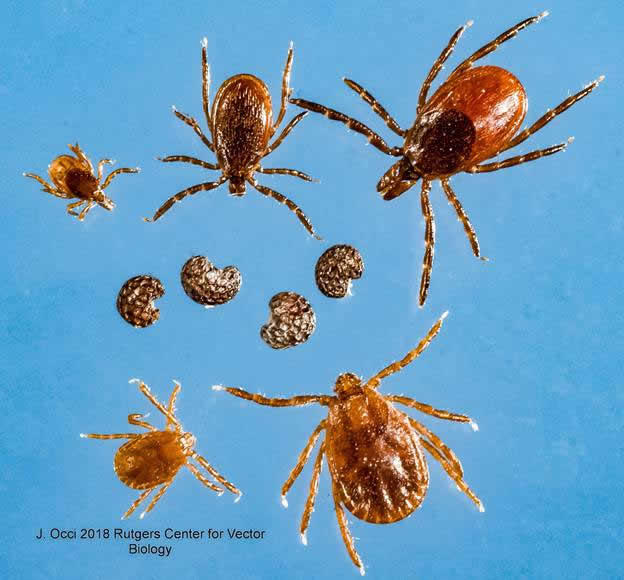There's a new type of tick in New York State
 There's a new type of tick in New York, the state Department of Health announced Tuesday: Haemaphysalis longicornis -- the "longhorned tick." DOH says it was found in multiple locations in Westchester County. From the press release:
There's a new type of tick in New York, the state Department of Health announced Tuesday: Haemaphysalis longicornis -- the "longhorned tick." DOH says it was found in multiple locations in Westchester County. From the press release:
While the longhorned tick has transmitted disease to humans in other parts of the world, more research is needed to determine whether this can happen in the United States. Regardless, New Yorkers should continue to take steps to protect themselves, their children and their pets against ticks and tickborne diseases that are present in New York State.
This tick is also a concern for the New York State agricultural industry and may pose a threat to livestock. Farmers should continue to work with their veterinarians to check their animals, particularly cattle, sheep and horses, for exposure to ticks and to ensure their parasite control plans are up to date and working. Symptoms of tick-borne disease in cattle include fever, lack of appetite, dehydration, weakness and labored breathing.
That photo on the right compares deer ticks (top) and longhorned ticks (bottom) with poppy seeds (middle) for scale. (Click on the photo for a larger version -- we figured no one needed to see that up close unless they wanted to.)
The longhorned tick is an invasive species -- it's native to multiple parts of Asia, as well as Australia and New Zealand. It first showed up in the United States -- or, at least, it was first recognized -- in central New Jersey last year on a sheep. A person had been shearing the sheep and realized she was covered in ticks -- like, really covered in ticks. (Warning: That NPR story is nightmare fuel.)
It's not clear how the ticks got here. And they've also now shown up in North Carolina.
There was an eradication effort at the New Jersey site, and some hope the tickets wouldn't be able to make it through the winter. But the New Jersey Department of Agriculture reported this past April the ticks had overwintered. [NJ.com]
And, oh, by the way: Longhorned ticks can reproduce asexually, which means they can multiple quickly. (Because 2018 wouldn't have it any other way.)
Here's the DOH page how to prevent tick bites.
Earlier: Spring is back, and so are ticks (ugh)
photo: J. Occi 2018 Rutgers Center of Vector Biology via NYS Department of Health
Say Something!
We'd really like you to take part in the conversation here at All Over Albany. But we do have a few rules here. Don't worry, they're easy. The first: be kind. The second: treat everyone else with the same respect you'd like to see in return. Cool? Great, post away. Comments are moderated so it might take a little while for your comment to show up. Thanks for being patient.
Comments
I have a phobia of ticks. Thank you for adding to my nightmare.
... said Tim on Jul 17, 2018 at 3:10 PM | link
So the lighter brown ones are the "longhorned"? Both species look to have long horns to me.
... said Peter on Jul 17, 2018 at 6:54 PM | link